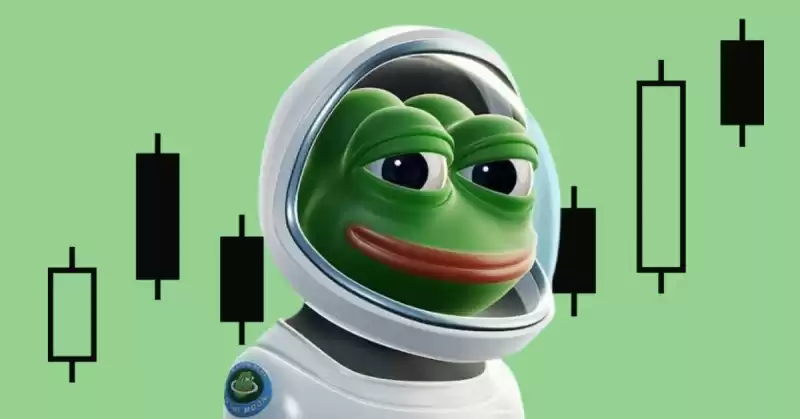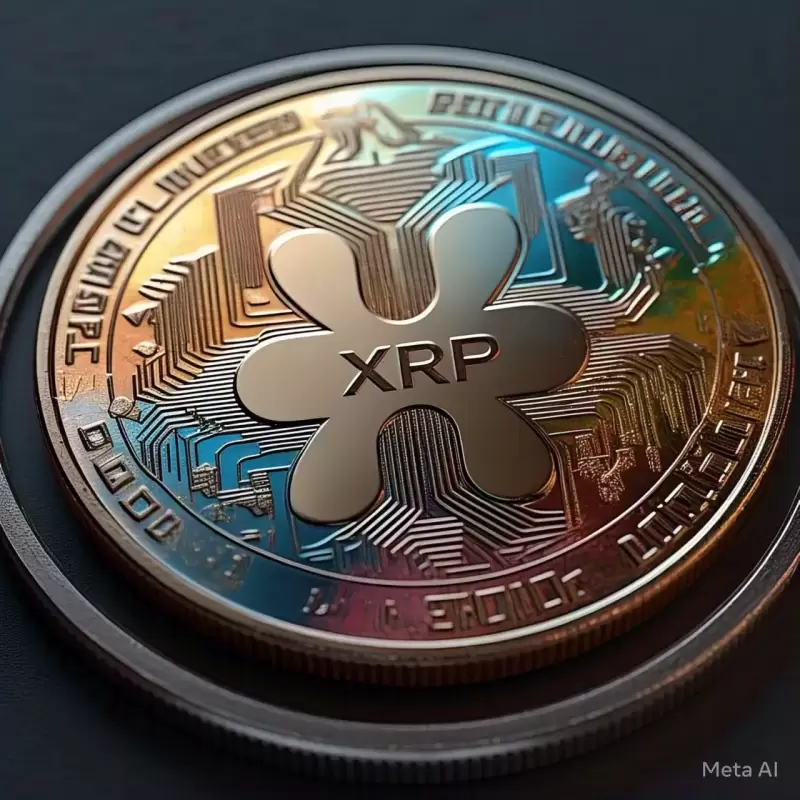 |
|
 |
|
 |
|
 |
|
 |
|
 |
|
 |
|
 |
|
 |
|
 |
|
 |
|
 |
|
 |
|
 |
|
 |
|
让我们直接达到这一点,Memecoin和shitcoin是两个完全不同的事情。 MEMECOIN - 自由和不受抑制,源自互联网文化的集体共鸣;狗屎币 - 短暂的,投机性和无情的;混淆这两者不仅是语义错误,而且是文化上的不匹配。

Original author: Mannay
原始作者:Mannay
Compiled by Odaily Planet Daily
每天由Odaily Planet编译
Translator: Azuma
翻译:Azuma
Let's get this straight, memecoin and shitcoin are two completely different things.
让我们保持直截了当,memecoin和shitcoin是两个完全不同的事情。
memecoin — free and uninhibited, derived from the collective resonance of Internet culture;
MEMECOIN - 自由和不受抑制,源自互联网文化的集体共鸣;
shitcoin — ephemeral, speculative, and soulless
狗屎币 - 短暂的,投机性和无情的
Conflating the two is not only a semantic error, but also a cultural mismatch. Calling a token like TRUMP or LIBRA a memecoin is like mistaking a shadow for the moon.
将两者混为一谈,不仅是语义错误,而且是文化不匹配。将像特朗普(Trump)或天秤座(Trump)这样的代币称为Memecoin就像将阴影误解为月球。
Memes spread from brain to brain like viruses - Richard Dawkins, The Selfish Gene (1976)
模因像病毒一样从大脑传播到大脑 - 理查德·道金斯(Richard Dawkins),自私基因(1976)
From Dawkins’ definition of a meme as a “unit of culture” to the creation of DOGE in 2013, memecoins have become the intersection of internet culture and decentralized finance. It is now most important to distinguish between true memecoins — cultural products born of community humor, shared values, and organic spread — and shitcoins designed to capitalize on speculative mania. Conflating the two is not just a semantic error, it undermines the cultural foundation that makes memecoins so fascinating. Memecoins are stories that can be traded as assets, and their value is just a byproduct of collective beliefs.
从道金斯(Dawkins)对模因作为“文化单位”的定义到2013年的创建道德(Doge),Memecoins已成为互联网文化和分散财务的交集。现在最重要的是要区分真正的纪念物 - 具有社区幽默,共享价值观和有机蔓延的文化产品以及旨在利用投机性躁狂症的shitcoins。将两者混为一谈,不仅是语义错误,它破坏了使成员如此迷人的文化基础。 Memecoins是可以作为资产交易的故事,其价值只是集体信念的副产品。
Memes are not static images or jokes: they are cultural genes that mutate and spread through human interaction. Dawkins’s metaphor in 1976 described memes as “selfish replicators” vying for dominance in the attention economy. Memecoins like DOGE or PEPE also embody this evolutionary process:
模因不是静态图像或笑话:它们是通过人类相互作用突变和传播的文化基因。道金斯(Dawkins)在1976年的隐喻将模因描述为“自私的复制者”,以争夺注意经济中的统治地位。诸如Doge或Pepe之类的模因也体现了这一进化过程:
A meme (such as DOGE) mutates into a token, gaining financial utility while retaining its cultural DNA.
一个模因(例如Doge)突变成一个令牌,在保留其文化DNA的同时获得了金融效用。
As an ecosystem, the community amplifies memes that resonate with shared values (humor, rebellion, nostalgia).
作为一个生态系统,社区放大了与共享价值观共鸣的模因(幽默,叛乱,怀旧)。
The blockchain infrastructure accelerates the replication process, generating more than 40,000 memecoins per day.
区块链基础设施加速了复制过程,每天产生超过40,000个成年人。
Unlike shitcoins, which lack cultural adaptability, memecoins thrive by being embedded in collective memory. They also bridge two eras of internet culture: Web2 and Web3.
与缺乏文化适应能力的狗屎币不同,模因通过嵌入集体记忆而壮成长。他们还桥接了互联网文化的两个时代:Web2和Web3。
In Web2, memes are centralized commodities. Platforms like Reddit and Twitter monetize viral content through advertising, but creators rarely benefit financially from it. It spreads through platforms like Reddit or Twitter, but its monetization process is isolated - the platform earns ad revenue, not the creator. The rise of DOGE in 2013 is an example of this, with its community funding charities but lacking ownership of the financial value of the meme.
在Web2中,模因是集中商品。诸如Reddit和Twitter之类的平台通过广告通过广告获利,但创作者很少从财务上受益。它通过Reddit或Twitter等平台传播,但其货币化过程是孤立的 - 平台赚取了广告收入,而不是创建者。 Doge在2013年的崛起就是一个例子,其社区资助慈善机构,但缺乏模因财务价值的所有权。
Web3 transforms memes into self-sovereign assets, where communities monetize their cultural labor. Memes also become tradable “equity” that is governed by decentralized communities rather than corporate algorithms. This shift is actually revolutionary, as memes have been transformed from ephemeral content to lasting cultural capital. For example, PEPE reclaimed the Pepe-themed meme from Web2 appropriation, enabling holders to “own” a part of Internet history.
Web3将模因转变为自我主持的资产,社区将其文化劳动货币化。模因也成为由分散社区而不是公司算法管理的可交易“股权”。这种转变实际上是革命性的,因为模因已经从短暂的内容转变为持久的文化资本。例如,Pepe从Web2拨款中收回了Pepe主题的模因,使持有人能够“拥有”互联网历史的一部分。
Real memecoins will follow a Darwinian development trajectory:
真正的成年人将遵循达尔文的发展轨迹:
Birth: A meme is tokenized, usually as a form of satire;
出生:一个模因被象征化,通常是一种讽刺形式;
Growth: Communities use humor and nostalgia to build social capital;
增长:社区利用幽默和怀旧来建立社会资本;
Maturity: Successful memecoins develop quasi-social utility (holders invest not only for profit but also for identity);
成熟度:成功的Memecoins开发了准社会效用(持有人不仅投资于利润,而且要降低身份);
Legacy: memecoins either fade away (most) or evolve into cultural symbols/community legends. For example, DOGE’s persistence stems from its myth of charity.
遗产:模因要么消失(大多数)或演变成文化符号/社区传说。例如,马诺的持久性源于其慈善神话。
Shitcoins bypass this life cycle. They are financial zombies — devoid of narrative, they are only harvested through predatory tactics and pump and dump. They lack cultural support, which dooms their life cycle to be short-lived.
狗屎币绕过这个生命周期。它们是金融僵尸 - 缺乏叙事,仅通过掠夺性策略和泵和垃圾场收获。他们缺乏文化支持,这注定了他们的生命周期是短暂的。
Memecoins effectively archive internet subcultures into the blockchain and function as 21st century folklore. Shitcoins, in turn, lack this emotional resonance and fail to generate community loyalty. They exploit trends without contributing to cultural narratives, alienating cryptocurrencies from their “countercultural” roots. They are parasites of memes and are fundamentally different from memes.
Memecoins有效地将互联网亚文化归类为区块链,并作为21世纪的民俗作用。反过来,狗屎币缺乏这种情感共鸣,无法产生社区忠诚。他们利用趋势而没有促进文化叙事,将加密货币与“反文化”根源疏远。它们是模因的寄生虫,与模因根本不同。
The real challenge now is to maintain cultural integrity. The confusion between memecoin and shitcoin has threatened the cultural foundation of cryptocurrency - exploitative tokens have led to the erosion of trust, low-quality copies have stifled innovation and diluted creativity, volatility and scams have attracted heavy-handed regulation, endangering creative freedom...
现在真正的挑战是保持文化完整性。 Memecoin和shitcoin之间的混乱威胁着加密货币的文化基础 - 剥削代币导致信任的侵蚀,低质量的副本扼杀了创新和稀释的创造力,波动性,波动性和骗局吸引了繁重的监管,危及了创造性的创造性自由。 。
Let’s take a look at some history. Created in 2013 by Billy Markus and Jackson Palmer, DOGE began as a parody of Bitcoin and a nod to Doge-themed memes. The entire project was full of self-deprecating humor. However, it was this irony that helped it stand out in the increasingly serious and competitive crypto space. Within a few months, a loyal community (you could call it a “cult”) quickly emerged, funding the Jamaican bobsleigh team for the 2014 Winter Olympics and sponsoring causes such as clean water initiatives. These early philanthropies revealed a community spirit that went beyond speculation.
让我们看看一些历史。 Doge由Billy Markus和Jackson Palmer于2013年创建,最初是对比特币的模仿,也是对Doge主题模因的点头。整个项目充满了自嘲的幽默。但是,正是这种具有讽刺意味的是,它在日益严肃和竞争激烈的加密货币领域中脱颖而出。几个月之内,一个忠实的社区(您可以称其为“邪教”)很快就出现了,为牙买加雪橇队提供了为2014年冬季奥运会和赞助事业(例如清洁水计划)提供资金。这些早期的慈善事业揭示了一种社区精神,超出了猜测。
Susan Blackmore wrote in The Meme Machine (1999) that the success of
苏珊·布莱克莫尔(Susan Blackmore)在Meme Machine(1999)中写道
免责声明:info@kdj.com
所提供的信息并非交易建议。根据本文提供的信息进行的任何投资,kdj.com不承担任何责任。加密货币具有高波动性,强烈建议您深入研究后,谨慎投资!
如您认为本网站上使用的内容侵犯了您的版权,请立即联系我们(info@kdj.com),我们将及时删除。
-

- 在索拉纳(Sol)(Sol)的动力学淡出的中间,以131美元的价格聚集
- 2025-04-05 02:20:12
- 如果销售压力继续持续,分析师现在看到100美元的卡的潜在下降
-

- 如今,Polkadot(点-5.15%)加密货币没有获得任何市场爱情
- 2025-04-05 02:20:12
- 在过去三年中,Web3基金会的官方加密硬币下降了80%,在过去的52周中下降了58%。
-

- XRP努力保持关键支持水平,因为更广泛的市场下跌会加剧
- 2025-04-05 02:15:12
- Ripple最近确认其将RLUSD Stablecoin整合到波纹支付中的计划被更广泛的加密货币市场所掩盖了
-

- Flowdesk加入广州网络的计划,旨在创建用于抵押和保证金管理的高级链链解决方案
- 2025-04-05 02:15:12
- 加密货币做市商Flowdesk已成为Canton Network计划的最新参与者
-

-

- RXR.LAB亮点:赌博行业的未来是分散的
- 2025-04-05 02:10:12
- 全球赌博行业的市场规模估计为2022年10万亿美元,预计2030年将达到14万亿美元
-

- 2025年最佳免费比特币云采矿平台
- 2025-04-05 02:06:15
- 本指南分析并编写了最高免费和值得信赖的比特币云挖掘平台的综合指南。
-

-



























































